In this article:
Diabetes is a condition wherein your body is unable to properly produce or utilize insulin. This results in abnormal blood sugar levels.
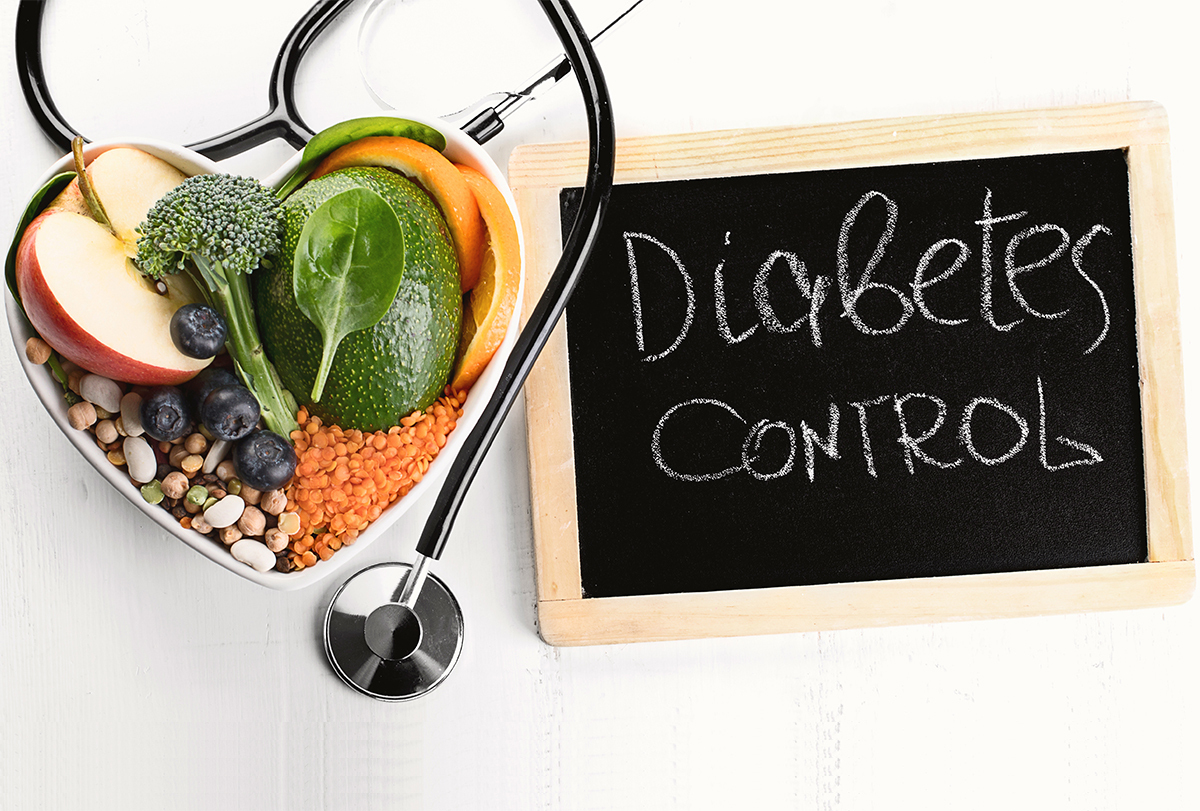
A healthy diet is a key part of diabetes management. Your blood glucose levels are highly dependent on the food you consume. Along with knowing what kind of foods to eat, knowing when to eat them is also vital in managing diabetes.
5 Diabetes-Friendly Breakfast Ideas
Try out the following ideas that are moderate on the glycemic load.
1. Almond-butter smoothie
- 1 scoop hemp/protein powder (protein)
- 2 tablespoons almond butter (fat/protein)
- ½ banana (fruit/vegetable)
- 1 cup blueberries (fruit/vegetable)
- ½ cup water
- ¼ teaspoon cinnamon (spice)
Blend ingredients till smooth.
Tip: Freeze fruit if you want an ice cream-like texture and only add ¼ cup of water.
Health benefit
Almond consumption has been shown to improve glycemic control and lipid profiles in people with type 2 diabetes. Remember that even though bananas are high on the glycemic index, combining it with some fats from the almonds in addition to cinnamon lowers the impact. (3)
Bananas are chockful of serotonin, magnesium, and B vitamins, all of which are important to manage cravings, stabilize blood sugar levels and balance the nervous system.
2. Yogurt parfait
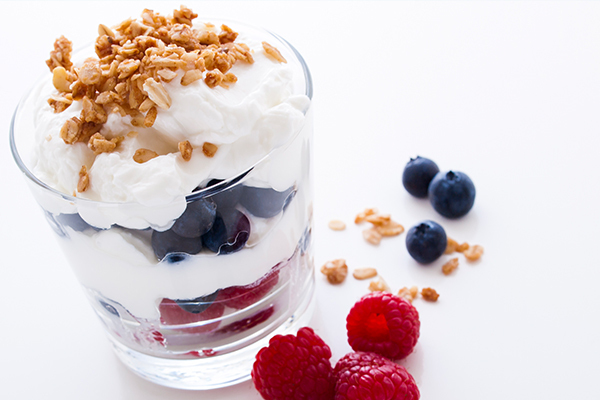
- 1 cup 2% Greek yogurt (protein)
- 1 cup mixed berries (fruit/vegetable)
- 2 tablespoons walnuts (fat/protein)
- ¼ tablespoon cardamom (spice)
Assemble everything into a parfait-style serving.
Health benefit
Fermented dairy such as yogurt has time and again been shown to be healthful when targeting weight loss, gut health, and metabolic issues.
Full-fat yogurt has been shown to provide greater satiety and less impact on insulin than its low-fat varieties. Choose Greek versions for higher protein content and more long-lasting satiety. (4)
3. Avocado on rye
- ½ avocado (fat)
- 1–2 slices of rye bread (complex carb)
- 1 soft-boiled egg (protein)
- Side of greens (fruit/vegetable)
- ¼ teaspoon turmeric (spice)
Mash avocado on toast, and top with soft-boiled egg in a messy-style serving.
Health benefit
Clinical studies show that avocado consumption helps support cardiovascular health and may support weight management and healthy aging. Dropping weight alone may reverse diabetes type 2 in many cases. (5)
4. Rice pudding
- ½ cup 18% coconut milk (fat)
- ½ cup water (add more as needed)
- ½ cup brown rice (complex carb)
- 1 cup sliced fruit (fruit/vegetable)
- 2 tablespoons nuts (fat/protein)
- ¼ tablespoons cardamom (spice)
- A pinch of Himalayan salt
Cook rice with water, coconut milk, cardamom, and salt for approximately 20 minutes. Serve with sliced fruit and 2 tablespoons of nuts.
Health benefit
The medium-chain fatty acids found in coconut seem to protect from lipotoxicity and subsequent insulin resistance without caloric restriction. (6)
That said, everything is about balance, which is especially true with the fatty acids, so make sure to eat a variety of both cold-pressed omega-3 and omega-6 oils in addition to sources of medium-chain fatty acids such as coconut. (6)
5. Overnight chocolate oats
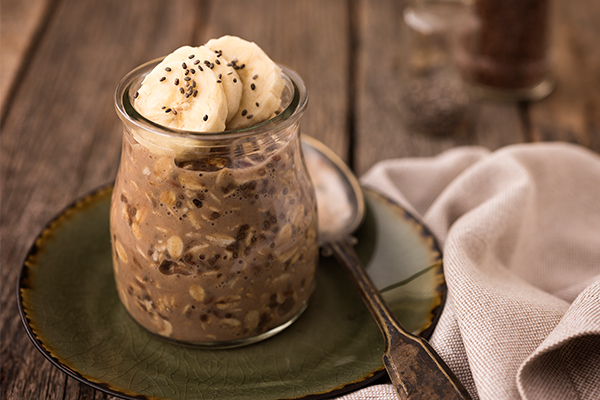
- ½ cup old-fashioned rolled oats (complex carb)
- ½ cup plant milk of choice
- ½ cup 2% Greek yogurt (protein)
- 1 tablespoon ground flax or chia seeds (fats)
- 1 tablespoon chopped nuts (fats)
- ½ chopped banana (fruit/vegetable)
- 2 squares chopped 70% dark chocolate
- ¼ teaspoon cinnamon (spice)
Mix everything in a glass jar, cover with a lid, and leave overnight in the fridge.
Health benefit
The antioxidant effects of cocoa polyphenols directly influence insulin resistance and, in turn, reduce the risk of diabetes. Cocoa may induce pancreatic β-cell regeneration, stimulate insulin secretion, provide a hypoglycemic effect, and improve glucose tolerance. (7)
Breakfast Guidelines for Diabetes Patients
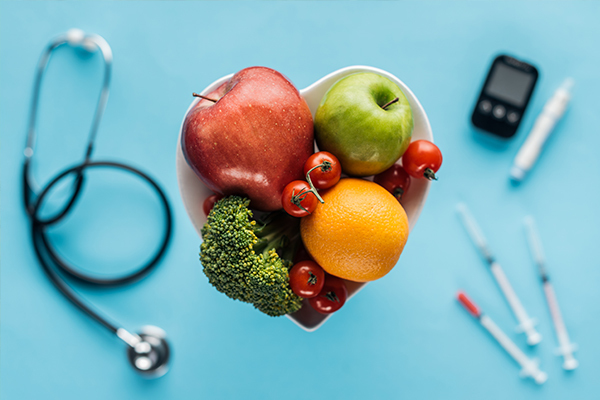
Remember to think about the following basic breakfast rules when combining your own meals:
- Vegetable/fruit (mandatory)
- 1–2 tablespoons of fats (mandatory)
- Spice (mandatory)
- Protein – For breakfast, stick to plant proteins, nuts, or yogurt; meat requires too much digestive capacity in the morning.
- Complex carbs (optional) – A complex carb is basically anything with the peel on or the whole grain.
These are general rules to go by, but they may vary slightly according to your individual biochemistry. (1) You will want to measure your blood sugar consistently after each meal type to see what your body best reacts to.
Some people need more protein in the morning than others, and some people only require what is in nuts to keep them balanced throughout their morning.
Another thing to be mindful of is how stress impacts your blood sugar. You can’t eat your way out of stress or poor sleep, and both play a role in blood sugar issues.
A good idea can be to wear a continuous blood glucose meter to notice which things in your life affect your blood sugar the most at the moment. And that may not even be food. Even though food is the fundament of good health, all pieces of the puzzle need to be solved – one is not enough. (2)
ALSO READ: Diabetes Diet: 10 Best Foods for Diabetics
The Importance of Breakfast for Diabetics
More and more research is supporting the fact that it is not simply what you eat but also WHEN you eat that matters. Hormones and digestive enzymes are secreted at different times throughout the day according to your body clock (circadian rhythm). (8)(9)(10)
Meal timing is key to optimizing blood sugar, digestion, hormones, and weight management. Your body is primed to absorb nutrients after fasting.
Avoid late breakfasts
Your body craves homeostasis, and this is also true when it comes to understanding how to regulate your blood sugar.
In the morning, your cortisol levels spike and this impacts blood sugar. When cortisol levels rise, you typically don’t feel hungry, yet if you do not eat before the cortisol levels drop, at around 10 AM, you suffer from a sudden energy crash mid-morning or even later in the afternoon or at night. (11)
The result of your eating doesn’t always happen immediately after. This often makes it difficult for you to connect the cause to your symptoms. For instance, skipping breakfast is connected to late-night snacking, yet most people think their eating problem is at night.
Have your dinner timely to enhance the effect of your breakfast
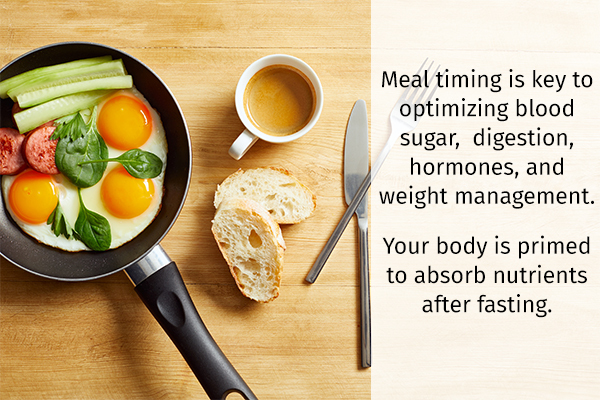
Breakfast is the first meal to nourish you after a long night of fasting. Ideally, you want to have eaten your last meal around 12 hours before breakfast.
If you have late dinners, your body is busy digesting the meal throughout the night instead of engaging in detoxification, fat burning, and autophagy. These processes are critical for the everyday maintenance of the body and mind.
So, a nourishing breakfast really begins the night before, with not eating after 8 PM preferably. (12)
Note: Longer fasting periodically can be beneficial, (13) but ongoing intermittent fasting is not ideal for hormonal health long term, especially for women. (14) Women have 52% lower serotonin levels compared with men, and these levels are highly affected by dieting. (15) Serotonin affects both progesterone and estrogen, which play a role in your metabolism, cravings, and fertility.
ALSO READ: 10 Tips to Follow Before and After Dinner
Refrain from late-night snacking
You are supposed to work on balancing your blood sugar throughout the day, so you need not use willpower or experience drastic blood sugar dips in the evening. (16)
You also know that diabetes type 2 can be easily reversed in many cases, simply by losing fat. And it is known from studies that late-night eating is associated with weight gain.
So there are many reasons why you want to eat breakfast both for symptom management and treating the cause of your blood sugar issues. (16)
On a side note, it is worth mentioning that poor blood sugar control has been linked to mercury toxicity (from dental fillings), (17) vitamin D, (18) and B12 deficiency, (19), and low levels of zinc (20) magnesium, (21) and chromium. (22)
ALSO READ: Night-Time Snacking: What Not to Eat
Recommended Blood Sugar Goals
When forming your meal plans, it is vital to determine the ideal blood sugar range you want to achieve:
- Your blood sugar post-meals should ideally be no more than 8 mmol/L. (23)
- Fasting blood sugar levels should be around 5.6 mmol/L. (24)
- Your HbA1C should be between 30 and 39 mmol/mol for optimal health. (25)
Anything that deviates from these numbers will be a risk factor, although if you have only one high reading of elevated blood sugar post-meal, you are recommended to do a couple of readings to confirm the issue.
What Is Glycemic Load?
Glycemic load measures the impact of the entire meal combined, rather than focusing on each food isolated. In contrast to glycemic load, the glycemic index is not very useful, because this system vilifies many healthy foods simply based on carb contents alone. And as you rarely eat mono-meals, such as a pound of grapes in itself, it is not relevant.
Proper food combining will mix foods that are higher on the glycemic index with foods that are lower on the glycemic index, thus leading to a moderate glycemic load meal. This could be combining a banana with nuts (high glycemic index food + low glycemic index food = moderate glycemic load meal). (26)(27)(28)
Here are some tips on food combining for blood sugar monitoring:
- Look at the glycemic index and combine from the top to the bottom, so your meals are balanced.
- Ensure your plate is divided in a T-shape, with half of your meal consisting of vegetables (for breakfast and/or snacks, fruit is fine), ¼ complex carbs such as starches/whole grains, and ¼ protein (hemp or pea protein, poultry, fish, or meat).
- Add 1–2 tablespoons of good-quality fat per meal, such as cold-pressed flax, walnut, olive, macadamia, avocado, or coconut oil. Fat helps to slow the digestion of high glycemic index foods, bringing down the glycemic load of the meal. Low fat is a no-go when it comes to blood sugar management.
- Get organic vegetables and fruits so you can eat the peel. Keeping the peel on potatoes drastically brings down the glycemic index, as the fiber is in the peel.
- Add spices. Spices are the medicine of the kitchen and have anti-inflammatory and blood sugar-stabilizing compounds. (29) Cinnamon, black pepper, turmeric, chili, and cardamom are all excellent choices for diabetics especially.
Is a Keto Diet Helpful for Diabetes Management?

A keto diet can be an efficient short-term solution to combat blood sugar issues. (30) However, long-term keto has been shown to train the body into hyper-reacting to healthful complex carbs in addition to increasing blood lipids. (30)(31)
The way you eat or restrict certain foods over time changes your biochemistry to adapt to the types of food you are eating. Thus, any dietary changes should happen slowly and gradually to allow your biochemistry time to adapt.
Rather than going on a short-term strategy that is not sustainable healthwise for the long run, simply adhering to smart food combining based on glycemic load is recommended.
Final Word
It is vital to make learned and right choices for the foods you consume in order to maintain your blood sugar levels. Every individual’s dietary need is different. Therefore, you need to determine what is best suited for you.
It is also important to include daily exercise in your routine. You can further consult a doctor about the kind of food you should eat and the exercises you should perform.
- Was this article helpful?
- YES, THANKS!NOT REALLY


